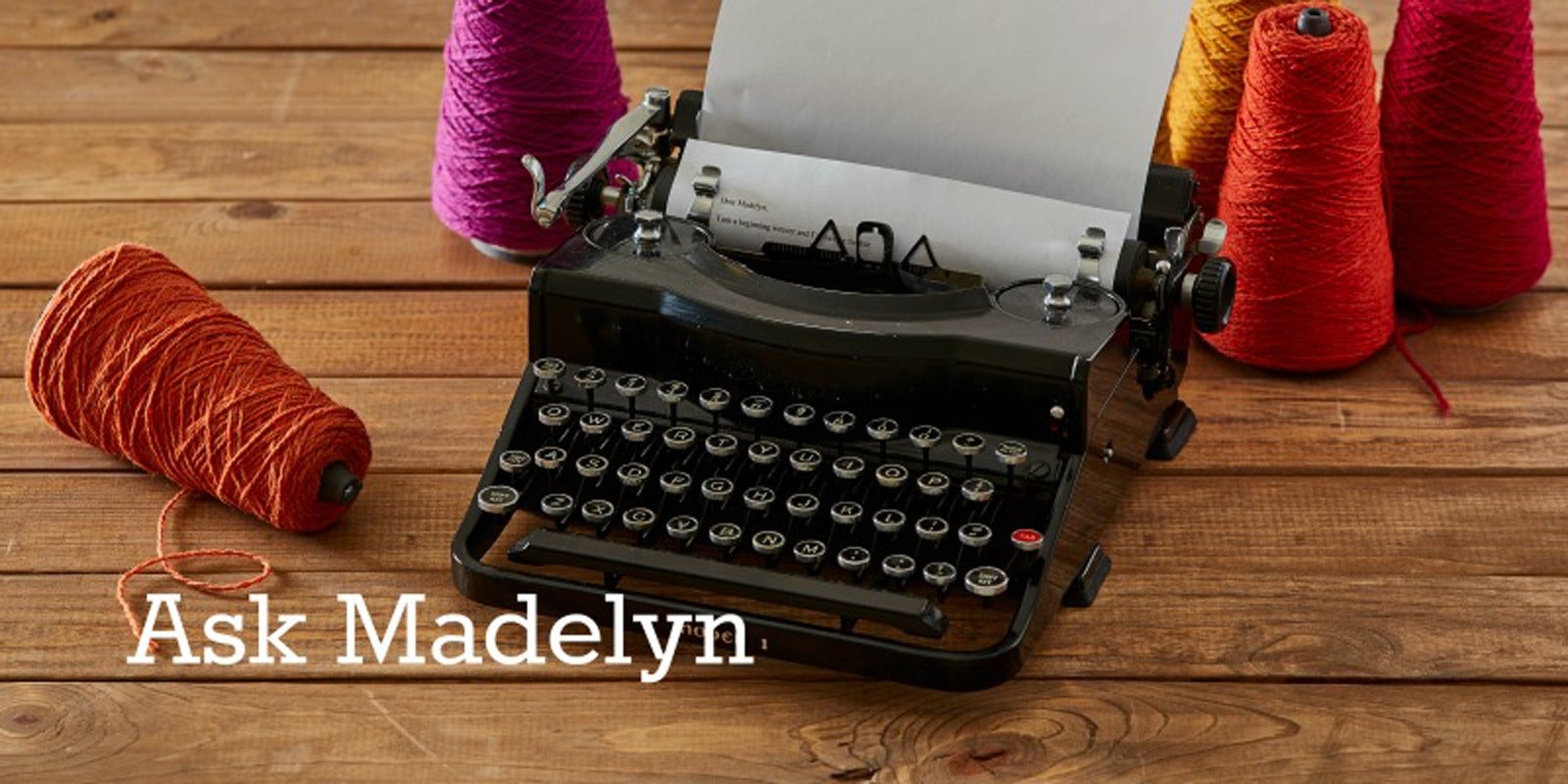Dear Madelyn,
I have been playing with turned-twill blocks and thoroughly enjoying it! The only thing that I have been having problems with is my floating selvedges. No matter what I do, I find that they move in/above the outermost thread on each side. I have tried removing the edge thread right before the floating selvedge, and I’ve tried taking the shuttle over/under, under/over, over, over/under,under but no order seems to prevent this from happening.
I guess my question is, does this have something to do with the scarves being 3/1 vs 1/3 twill?
––Mary Dargie
Hi Mary!
My first thought is that you are looking at the selvedges more closely than most people ever will!
But first, let’s look at that shuttle behavior. Most of the time, I recommend taking the shuttle into each shed over the floating selvedge and coming out of the shed under it. This is because most jack looms don’t place the down shafts as far down as the raised shafts go up, so it’s easy to slide the shuttle into the shed over the floating selvedge without looking (the floating selvedge, since it is not threaded is down from the center of the shed, closer to the down shafts than the raised shafts). It’s equally easy to tip your finger under the floating selvedge as the shuttle exits to raise it up and catch the shuttle. Your hand has to be there anyway.
If you examine what happens to the floating selvedge (which most people don’t) you might notice that with plain weave, for example, the floating selvedge on one side or both weaves with the outermost edge thread, making a doubled thread there. If that happens and you don’t like it, you can change that over/under arrangement to under/over (or over over/under under) and you’ll find that one of the methods prevents the floating selvedge from weaving with the edge thread.
However, with 1/3 or 3/1 twill, in two of the sheds the floating selvedge will weave with the thread next to it. MAYBE you could figure out an order for your four repeating picks that varies the under/over method enough to prevent it, but you’d have to remember that arbitrary order. Another option is to try weaving without a floating selvedge and see how smooth an edge you can make (the weft will sometimes turn inside the edge thread). Or, you could decide it doesn’t look all that bad the way it is. That might be my choice. Hmm. I just had another idea. If you had a much finer yarn in the same fiber and color, you might try using it as the floating selvedge.
––Madelyn

